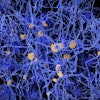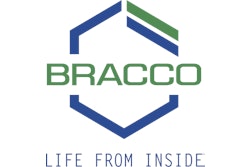VIENNA - A clutch of recently published research studies has demonstrated the possibility of a link between the administration of gadolinium-based contrast agents and the development of nephrogenic systemic fibrosis (NSF) in patients with renal insufficiency. The link was further explored in a presentation by Scottish researchers today at the European Congress of Radiology (ECR).
A possible link between gadolinium and NSF was raised when the U.S. Food and Administration (FDA) issued a health advisory in June 2006. NSF patients can become severely disabled due to contractures, muscle weakness, and arthralgia, according to the International Center for Nephrogenic Fibrosing Dermopathy Research.
"We performed a retrospective analysis of all dialysis patients between January 1, 2000, and January 1, 2006, to compare the frequency and degree of exposure to gadolinium contrast agents and NSF amongst our renal failure population," said Dr. Giles Roditi from the department of radiology at Glasgow Royal Infirmary, North Glasgow Hospital in Scotland.
"Our cohort is actually the whole of the renal failure population of all of western Scotland," Roditi added. "All of these patients come through two NHS (National Health Service) units (Glasgow Royal Infirmary and Western Infirmary)."
Giles and his colleagues reviewed the electronic patient records (EPRs) of 1,826 patients on dialysis, and conducted interviews with dermatologists, pathologists, and nephrologists associated with the NHS units. Of this cohort, 425 patients underwent a total of 583 gadolinium-enhanced MRI studies.
The overwhelming majority (522 studies or 89.5%) of the gadolinium-enhanced MRI studies used gadodiamide (Omniscan, GE Healthcare, Chalfont St. Giles, U.K.) in a median dose volume of 30 mL, Roditi said. The other 61 studies utilized gadobenate dimeglumine (MultiHance, Bracco Diagnostics, Princeton, NJ), gadopentetate DTPA (Magnevist, Berlex, Wayne, NJ), gadofosveset trisodium (Vasovist, Epix Pharmaceuticals, Cambridge, MA), or gadobutrol (Gadovist, Bayer Schering Pharma, Berlin).
The researchers found 14 cases (0.77%) of confirmed NSF in their analysis of the 1,826-patient cohort. Of these 14 cases, 13 had received gadolinium contrast.
"All patients exposed to gadolinium contrast who developed NSF had received gadodiamide, though this was the dominant contrast agent used," Roditi said.
In addition, Roditi noted that the NSF group had received a higher cumulative dose of gadolinium and demonstrated a trend toward having received more gadolinium-enhanced MRI studies. However, gadolinium administration was determined to not be the only factor in the development of NSF; in one patient NSF symptoms started before the use of a gadolinium contrast agent.
Also of interest to Roditi and his colleagues was the variability in time to onset of NSF in the group of 14 patients. The median time to onset of NSF was 53 days; in two of these patients, NSF did not manifest until more than 200 days after gadolinium-enhanced MRI, and in one patient symptoms of the disease did not appear until 487 days after the MRI study.
Roditi and his fellow researchers are urging caution in the use of any gadolinium contrast for patients with moderate to severe renal insufficiency. The FDA recently stated that while NSF cases have been linked to only three of the five gadolinium-containing contrast agents approved for use with MRI in the U.S., the agency believes that there is the potential for the disease to occur with any gadolinium contrast agent.
"A strong association between administration of gadolinium contrast and NSF exists; however, the case without exposure and the onset time intervals in others suggest this is not the only cause," Roditi said. "We recommend that, at present, gadolinium contrast be used with caution in patients with stage 5 kidney disease."
By Jonathan S. Batchelor
AuntMinnie.com staff writer
March 9, 2007
Related Reading
Gadolinium-based contrast may cause nephrogenic systemic fibrosis, March 6, 2007
ACR releases new MR safety guidelines, March 1, 2007
FDA learns of more cases of gadolinium-related disease, December 26, 2006
Link between gadolinium exposure and skin disease strengthened, November 22, 2006
FDA issues gadolinium health advisory, June 15, 2006
Copyright © 2007 AuntMinnie.com


.fFmgij6Hin.png?auto=compress%2Cformat&fit=crop&h=100&q=70&w=100)





.fFmgij6Hin.png?auto=compress%2Cformat&fit=crop&h=167&q=70&w=250)











